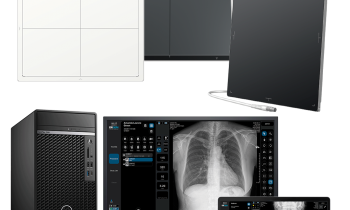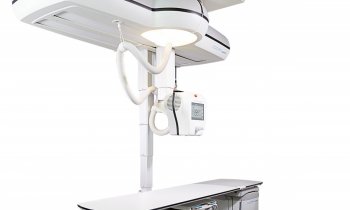Proton therapy
The Curie Institute opens a new state-of-the-art centre.
Annick Chapoy reports from Paris
As one of the most advanced forms of precision radiotherapy, proton therapy enables the irradiation of tumours located deep within the body, in the proximity of critical organs, such as the optic nerve or some brain areas. The Institut Curie has renovated its proton therapy centre in Orsay near Paris. Since 1991, when the original centre opened, it has treated over 5,000 patients (4,000 for eye melanoma, which remains the main indication to this day).


The institute is a national centre of excellence on eye melanoma. ‘Traditional therapies are rather inefficient,’ said Dr Rémi Dandale, medical manager of the new centre. ‘Proton therapy has a great advantage because it conserves the eyeball and useful vision in 90 percent of cases.
Every year the proton therapy centre also treats about a hundred adult or child patients with chordomas or chondrosarcomas of the cranial base -- rare tumours known to be resistant to traditional radiotherapy and requiring high doses of radiation.
‘Proton therapy is certainly most beneficial among children since it enables better protection of critical organs, and thus reduces complications and the risk of secondary tumours,’ explained radiation oncologist Dr Sylvie Helfre. Although they are not frequent (0.5% of cancers) paediatric cancers remain the second cause of child mortality between ages one and 15 years. Each year, 1,500 new cases are diagnosed in France.
The centre’s complete renovation was designed to increase the number of children treated. In 2006 the creation of an anaesthetics team already enabled treatment under general anaesthesia for children less than four years old. Prior to this, they had to be sent to Boston or Switzerland. Every year since 2006, between 25 and 30 children have benefited from proton therapy at the Centre.
Following a total, four-year renovation, the new centre has the capacity to treat 200 additional patients annually, including 120 children (out of 750 children who need radiation therapy annually in France). This Centre of national importance needed an investment of €50 million, made possible by a loan of €30 million and exceptional support from the Ministry of Health (The State’s subsidy of €15 million and support to pay back the loan taken out by the Institut Curie).
The Proton Therapy Centre is part of the Institut Curie’s Radiotherapy Department, the most complete in Europe where patients from all over the country and beyond are treated.
The centre has a new generation proton accelerator (230 MeV) and treatment room equipped with an isocentric arm -- a 10-metre diameter metal structure weighing over 100 tons -- which enables the beam to be aimed around a patient at all angles in order to treat new indications, which were previously not accessible -- particularly in children.
A pilot centre in patient management
Renovation not only involved new equipment and technological developments. The work organisation was also completely reviewed using lean management methods. This approach for the continuous improvement of work practices focuses on patients’ expectations and on providing staff with the necessary conditions to meet them.
‘At first feedback from the entire staff was taken into account to identify the valuable steps -- those that could be optimised to increase productivity and those that could be suppressed. By improving the design of control panels, upgrading to digital radiology (faster than traditional technology), or by repositioning some accessories, we have saved a few – very precious -- minutes for each patient,’ healthcare manager Hélène Colella-Fleury pointed out.
Improved control over technical steps also allows more time to support patients throughout their treatments.
A new consultation is now offered: Additional time for exchange, which enables patients to have all their questions answered. They are less stressed and thus cooperate better during their treatment.
‘Optimising treatment preparation steps enables us to receive 19 patients per day, instead of 12. We would like to increase that number to 21 in the future,’ said Hélène Colella-Fleury. The Centre receives adults and young children with their families for periods that can last for several weeks. To stay close to their children during therapy, families can be accommodated at the Irène Joliot Curie Parents’ House in central Paris. Also, there are warmly coloured personal and family areas at the centre itself, to maintain a homely atmosphere.
25.02.2011











